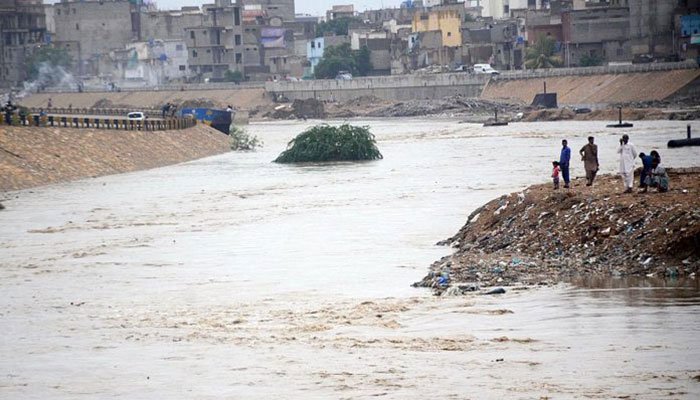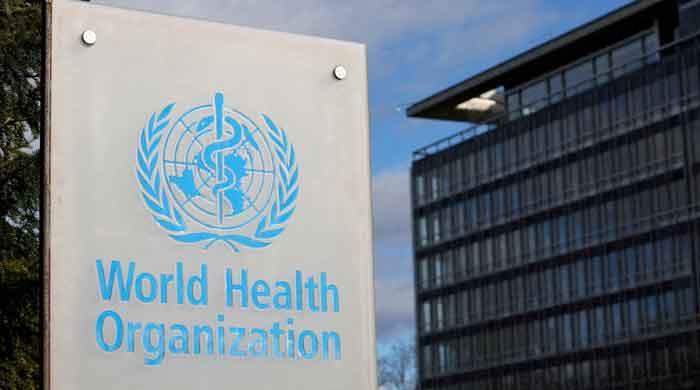Researchers to test Karachi's sewage water for COVID-19 presence
People can shed SARS CoV-2 in their stool in the first three to seven days after infection
July 15, 2021

- The project will test wastewater for presence and concentration of COVID-19 virus.
- People can shed SARS CoV-2 in their stool in the first three to seven days after infection.
- This provides health authorities knowledge of the number of cases in an area before swab tests are available.
KARACHI: Public health researchers are working on a pilot project according to which sewage water in Karachi will be tested for the presence of coronavirus and its concentration.
As per a statement issued by the Agha Khan University (AKU) Tuesday, the World Health Organisation's Pakistan office, the National Institute of Health (NIH) and infection disease epidemiologists from the AKU will collaborate on the project.
The project will test wastewater samples for the presence of coronavirus and its concentration. Sewerage surveillance systems have previously been set up in countries such as the US, Australia, Canada and other European nations.
These systems have helped detect high concentrations of the virus in sewage a week to ten days before cases would rise, enabling public health authorities to take prompt action to contain the spread of the disease.
How does sewage water help detect cases of the virus earlier on?
Sewage surveillance systems take advantage of the fact that the presence of viruses can be identified in sewage before a person shows symptoms.
For example, people can shed SARS CoV-2 in their stool in the first three to seven days after infection, long before a person begins to suffer from a fever, cough, or shortness of breath.
This means that wastewater sampling has the potential to act like a sensitive, early warning system for trends in new cases and a potential way to prevent new cases. That’s because nasal swab tests, which detect the presence of the virus in the nose, are typically only taken after symptoms appear, between seven and ten days after infection, which means that people could have unknowingly been spreading the disease for days before their positive test.
Researchers will analyse the amount of SARS CoV-2 particles per millilitre of filtered sewage to estimate the number of cases in the area. They hope to generate data that will help them estimate the future number of cases in a well-demarcated catchment area by measuring viral concentration in sewage samples.
In this way, if the COVID-19 particles in an area's sewage systems are found to be on the rise, then before the swab tests are taken, health authorities will be prepared in advance to deal with a rise in cases of the infection.
Intervention
Data about the quantum of the virus in wastewater will also be compared with records from the district health office about the number and location of positive tests in the area to prepare heat maps of high and low incidence areas.
This could enable prompt preventive measures such as mass testing or targeted lockdowns to be taken in high-burden areas.
Conversely, the data could also help provide an indication of a forthcoming decline in new cases which could inform policy decisions such as the easing of restrictions.
“Insights from sewage surveillance can help us get ahead of the virus and take more effective measures to curb new cases,” said Dr Imran Nisar, assistant professor at the AKU and principal investigator of the study.
“No one knows when this pandemic will end, but new tools such as wastewater analysis can potentially make mitigation measures more effective.”
Help in vaccination
Researchers also plan to compare data about the number of vaccinations in the area against the volume of cases to understand the effectiveness of vaccine drives.
In later phases of the project, researchers will conduct genetic sequencing of wastewater samples to determine whether new COVID-19 variants have arrived in the city. This could signal the need to ramp up prevention measures or consider changes in precautionary measures, treatments, or vaccine roll-out plans.
“Lockdowns have enormous social and economic consequences,” said Dr Nisar.
“Comparing data from our sewage surveillance study with clinical and epidemiological data from the community will enable us to halt the cycle of surges leading to lockdowns by enabling policymakers to take prompter, more effective decisions. Throughout the study, we’ll be working closely with the district health office to ensure timely use of data.”
Once researchers have assessed the feasibility of the system in Karachi, they hope to be able to scale up the programme at the provincial and national level.
Originally published in The News











